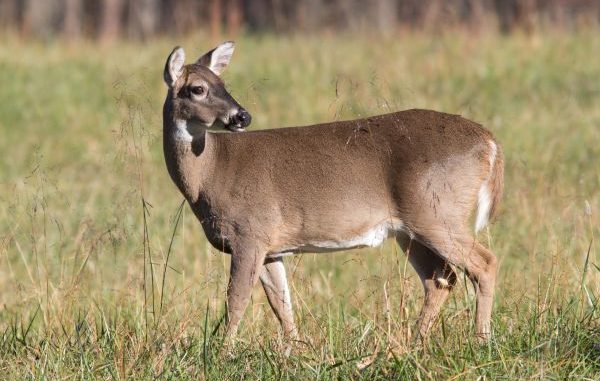
Disease has been found in Texas and Arkansas; plans already in place if detected here
Even though no cases of chronic wasting disease have been found in Louisiana, the state is stepping up preventive efforts to monitor Louisiana’s native white-tailed deer population for the incurable brain infection.
According to the Louisiana Department of Wildlife and Fisheries, the disease has already entered both Texas and Arkansas, and the state has developed a plan in the event it eventually is found here.
“We’ve been monitoring for CWD statewide for more than 10 years, and have checked 7,000-plus deer and have not discovered it,” said Dr. Jim LaCour, the state wildlife veterinarian who updated the Louisiana Wildlife and Fisheries Commission on the disease during its meeting today in Baton Rouge. “We are being proactive because it’s in our neighboring states, and it’s close enough that we need to be on guard.’’
CWD is a neurodegenerative disease found in most deer species, including moose, elk and mule deer, as well as white-tailed deer. It is infectious and always fatal. It’s part of a group of diseases known as transmissible spongiform encephalopathies (TSEs) and is similar to BSE (mad cow disease) in cattle and scrapie in sheep. The diseases cause irreversible damage to brain tissue which leads to salivation, neurological symptoms, emaciation and death of the animal, according to a press release.
CWD is caused by prions, which are proteins normally found in the body that have mutated. These prions kill nerve cells and cause holes to develop in the brain tissue. They are spread through direct deer-to-deer contact or through contact with urine, feces, saliva and body parts of infected deer or infectious materials in the soil. It’s most commonly found in deer pens and captive facilities, the release states.
It is different from hemorrhagic disease (epizootic hemorrhagic disease virus and/ or bluetongue virus), which is a virus spread by bites from infected insects.
Deer infected with CWD can spread the disease even before symptoms develop, and it can take one to two years for infected animals to become symptomatic. When symptoms appear they can include emaciation, lethargy, abnormal behavior and loss of bodily functions. Other signs include excessive salivation, loss of appetite, progressive weight loss, excessive thirst and urination, teeth grinding and drooping ears.
According to the Centers for Disease Control and Prevention, there is no evidence that CWD can infect humans. However, the CDCP recommends caution in handling venison in the infected region and that deer be tested for CWD before consuming.
The prions remain for years in the environment and there has not been a method discovered to eradicate them.
“Once the infected deer die, after they decompose, those particles go into the soil and they stay there indefinitely,’’ LaCour said.
CWD has been documented in 23 states and two Canadian provinces.
Though Louisiana has yet to see a case of CWD, LaCour and Jimmy Ernst, the Deer Management Assistance Program coordinator, said the LDWF has developed a plan should the disease be found here.
Once it is discovered, there will be feeding and baiting restrictions in the geographic area where the disease is initially found. It may also be necessary to reduce and maintain a lower deer density in that area, the release states.
There also will be movement restrictions placed on deer body parts, and the creation of a CWD management zone — the size of which will depend on the location and distribution of infected deer.
“Hunters won’t be able to bring a whole deer out from property within that radius,’’ Ernst said. “They’ll be able to bring out the deboned meat, a clean skull plate with the antlers, and the cape, which is the skin of the head and shoulders.
“The goal is to take an area around the initial case and maintain intensive surveillance. We will liberalize the season locally and we will test those harvested animals as they come out. By stopping baiting and feeding, which congregates animals, and by reducing the population, there isn’t as much deer-to-deer interaction. That will slow the spread of the disease. We will continue surveillance and control in that area for an indefinite period of time. Hopefully, working with hunters and landowners, we can minimize the spread of the disease with these measures.’’
Ernst said the LDWF will remain vigilant in testing and enacting preventative measures against CWD introduction into Louisiana. Working with Louisiana Department of Agriculture and Forestry to prevent importation of potential CWD-infected animals into the state through the LDAF-licensed deer pen program is a continuing effort of LDWF.
For more information about chronic wasting disease, click here.


